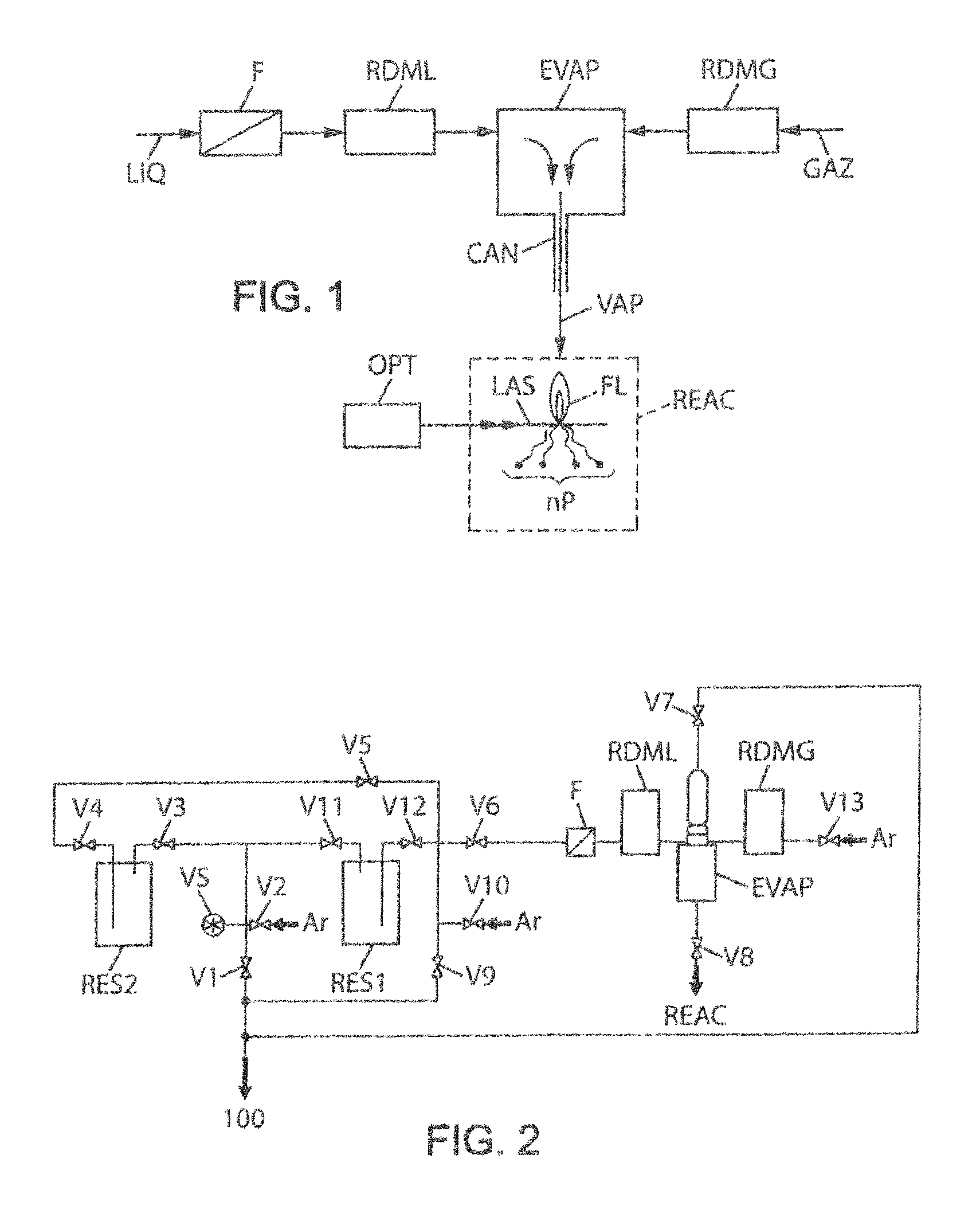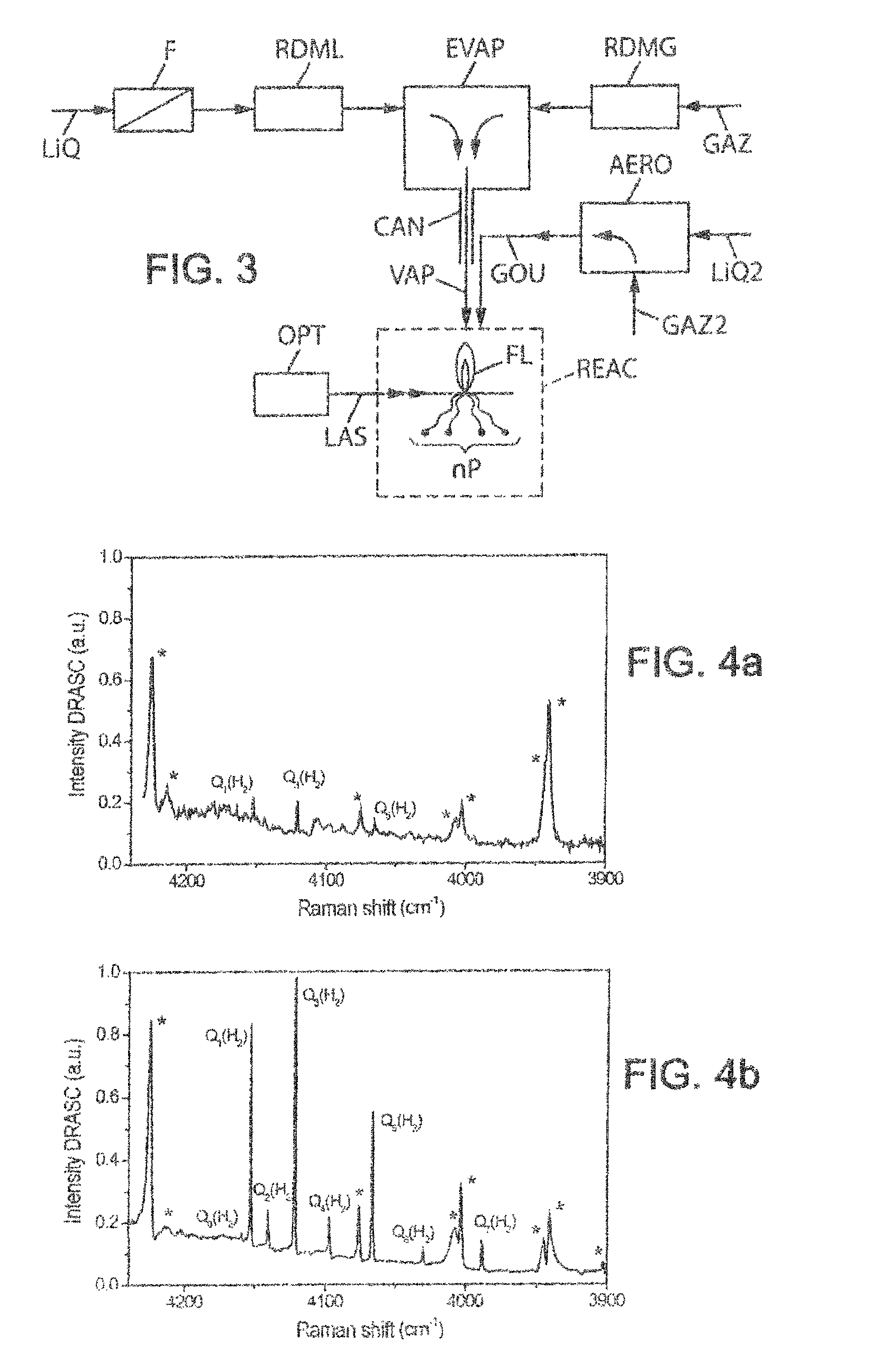Synthesis of nanoparticles by laser pyrolysis
a laser pyrolysis and nanoparticle technology, applied in zirconium oxides, zirconium oxides, oxygen/ozone/oxide/hydroxide, etc., can solve the problems of metal oxide powders obtained from metal precursors, mechanically brittle materials, and main limit of synthesis techniques
- Summary
- Abstract
- Description
- Claims
- Application Information
AI Technical Summary
Benefits of technology
Problems solved by technology
Method used
Image
Examples
Embodiment Construction
[0068]An exemplary embodiment of the invention is shown in FIG. 1.
[0069]The precursor, first in liquid form LIQ, is filtered by filter F. Its flow rate is then controlled by a mass flow controller RDML, which is followed by an evaporator EVAP, which then converts the precursor to the vapor phase VAP before interaction with the laser beam LAS.
[0070]Thus, it is proposed to couple a laser pyrolysis device with a mass flow controller RDML to control the precursor flow rate in liquid form LIQ, before converting it to the vapor phase VAP for injection into the pyrolysis reactor REAC.
[0071]The vapor VAP is entrained by a gas stream (preferably by an inert gas in the pyrolysis reaction, such as a rare gas, for example argon). This gas stream GAZ is also managed by a gas mass flow controller RDMG. The mixture of vapor and gas (referenced VAP) leaving the evaporator-mixer EVAP is finally conveyed to the laser pyrolysis reactor REAC via a line CAN of which the temperature is set so as to preve...
PUM
| Property | Measurement | Unit |
|---|---|---|
| temperature | aaaaa | aaaaa |
| specific surface area | aaaaa | aaaaa |
| frequency | aaaaa | aaaaa |
Abstract
Description
Claims
Application Information
 Login to View More
Login to View More - R&D
- Intellectual Property
- Life Sciences
- Materials
- Tech Scout
- Unparalleled Data Quality
- Higher Quality Content
- 60% Fewer Hallucinations
Browse by: Latest US Patents, China's latest patents, Technical Efficacy Thesaurus, Application Domain, Technology Topic, Popular Technical Reports.
© 2025 PatSnap. All rights reserved.Legal|Privacy policy|Modern Slavery Act Transparency Statement|Sitemap|About US| Contact US: help@patsnap.com



